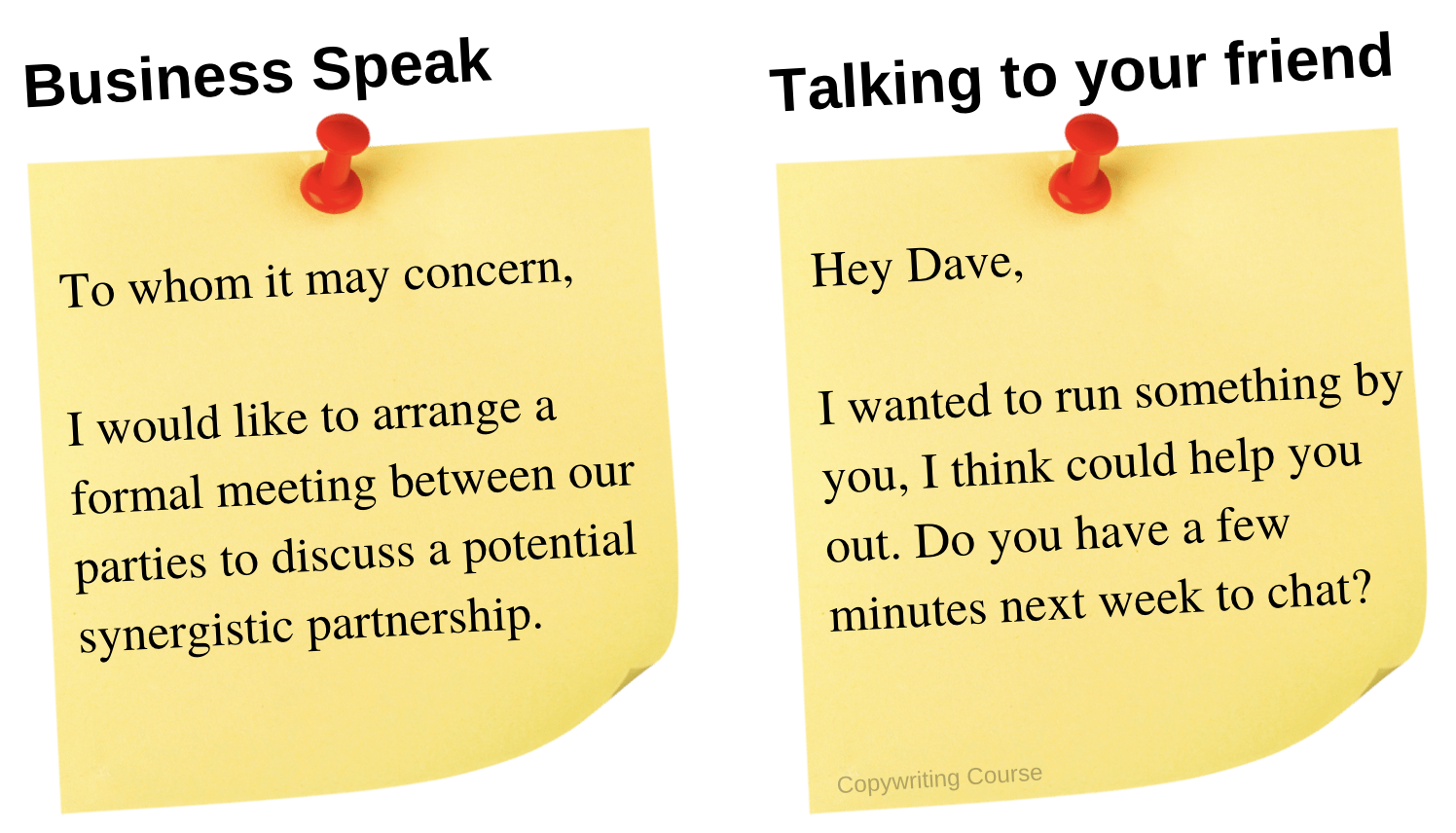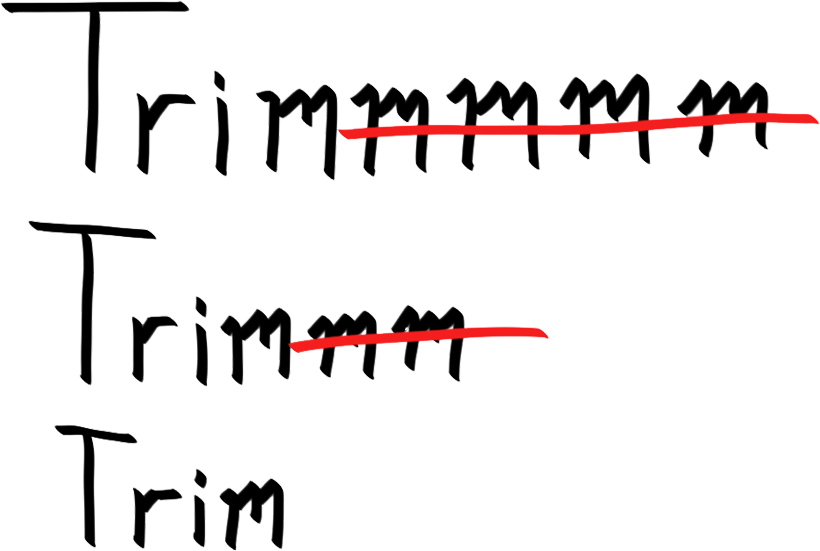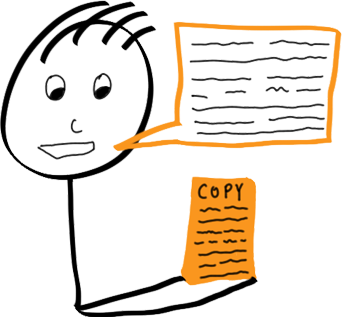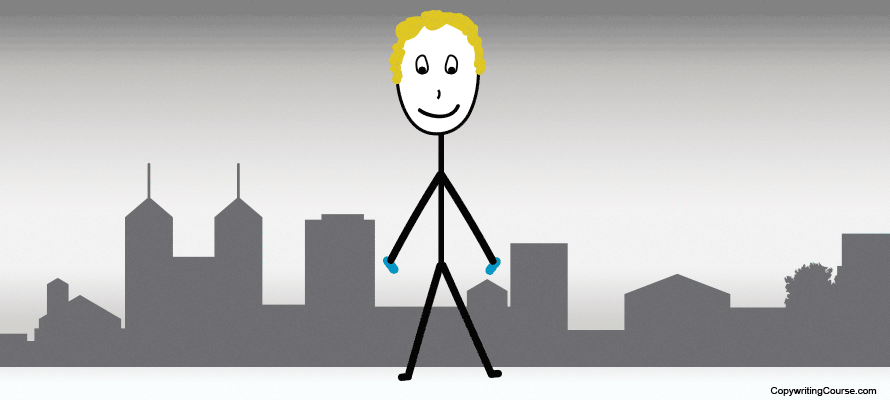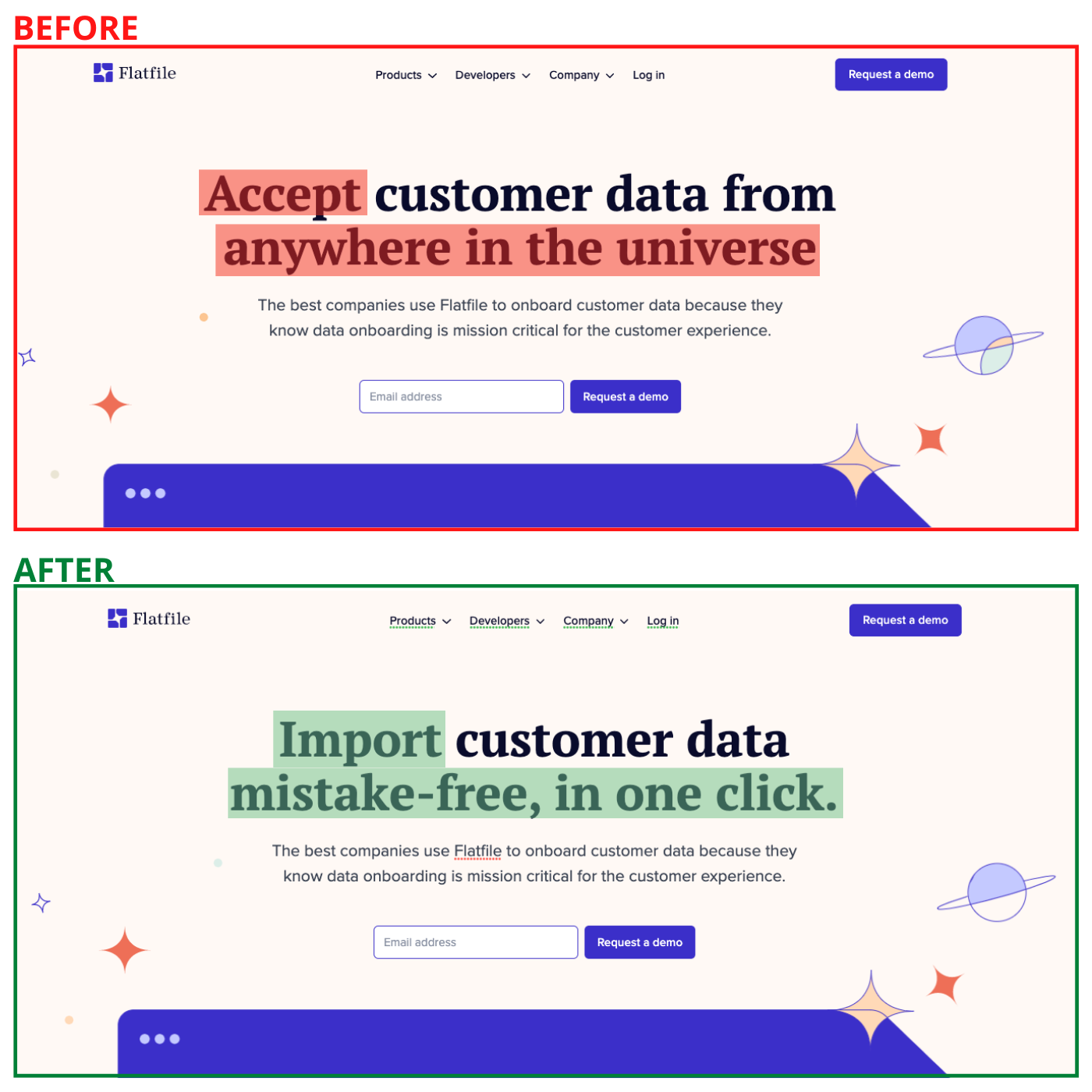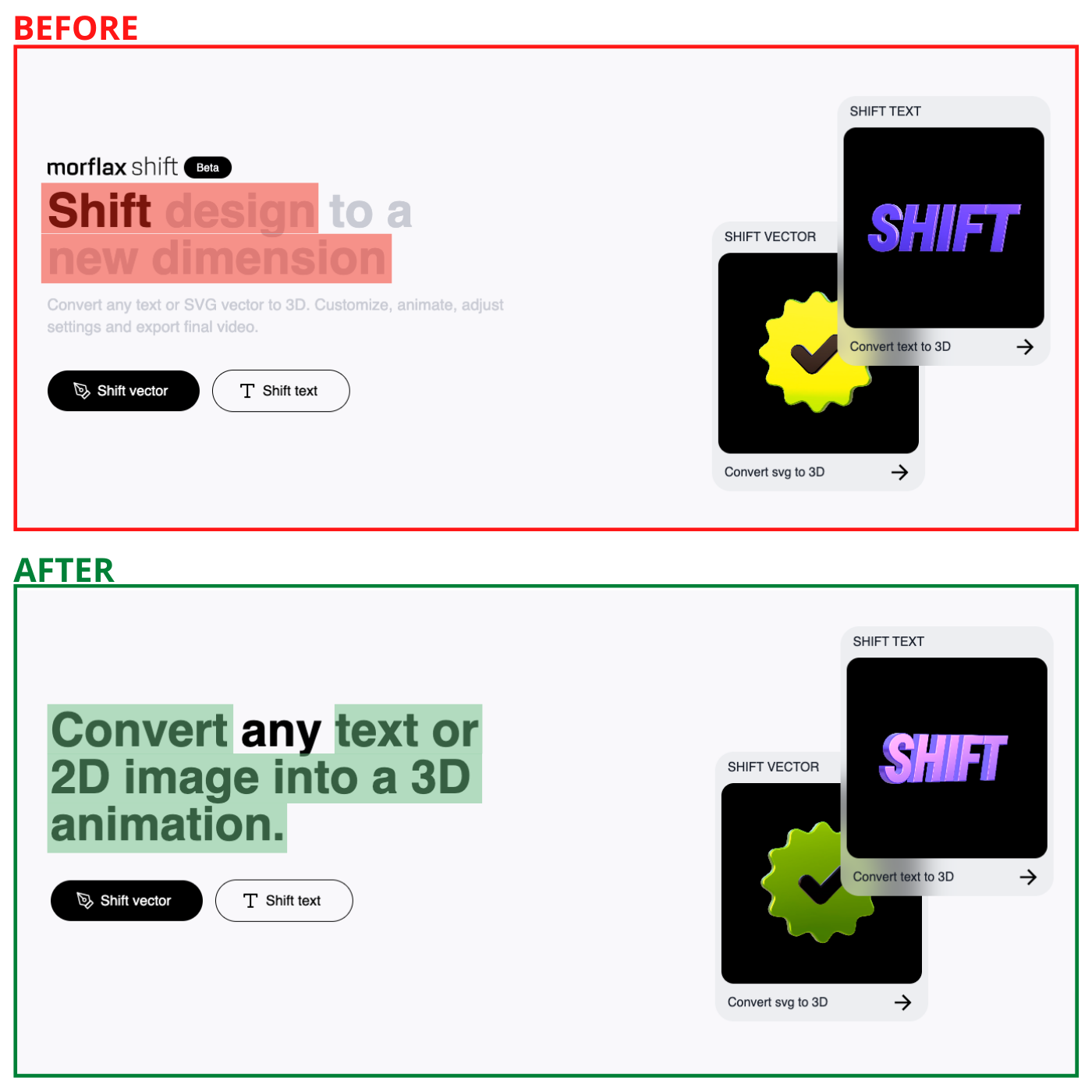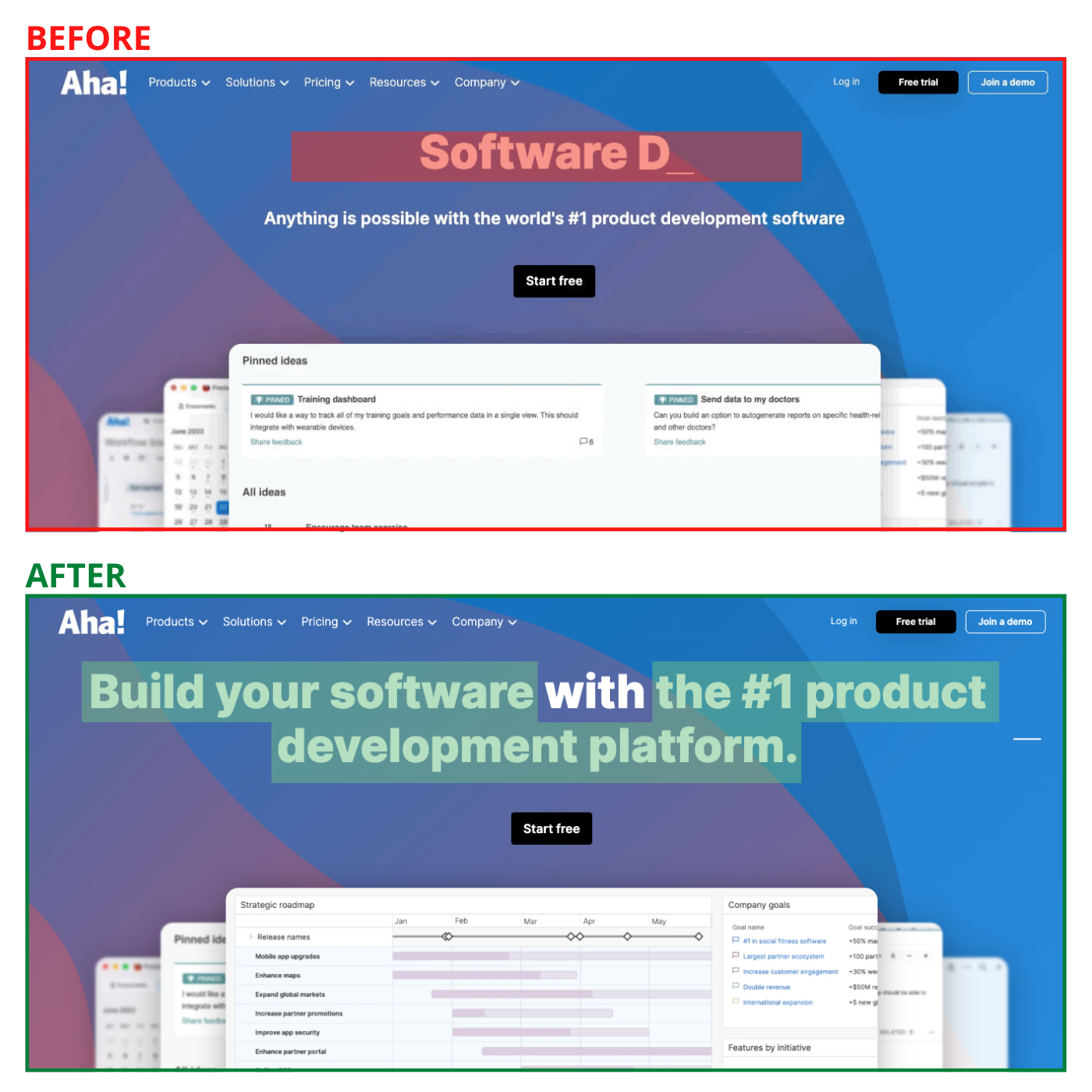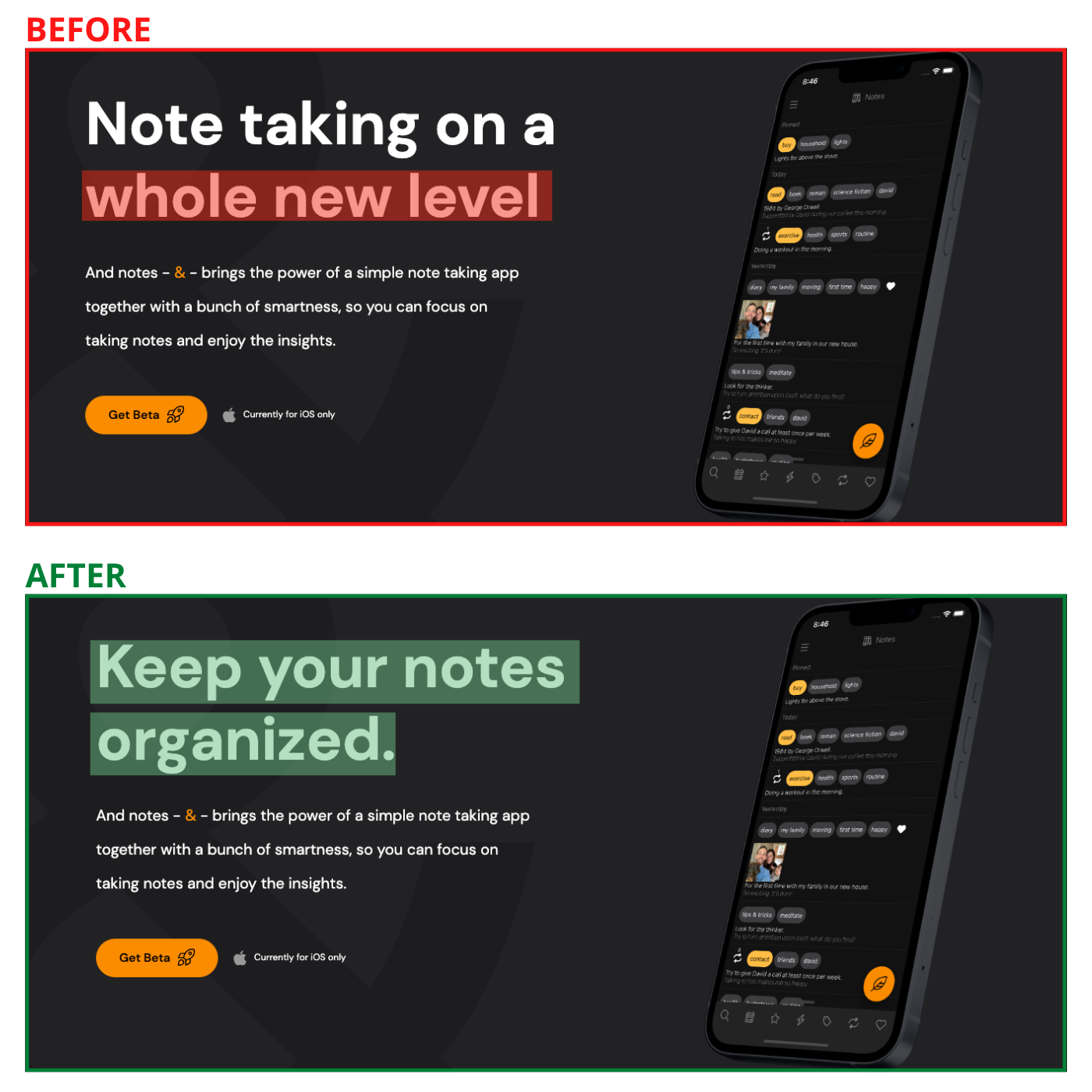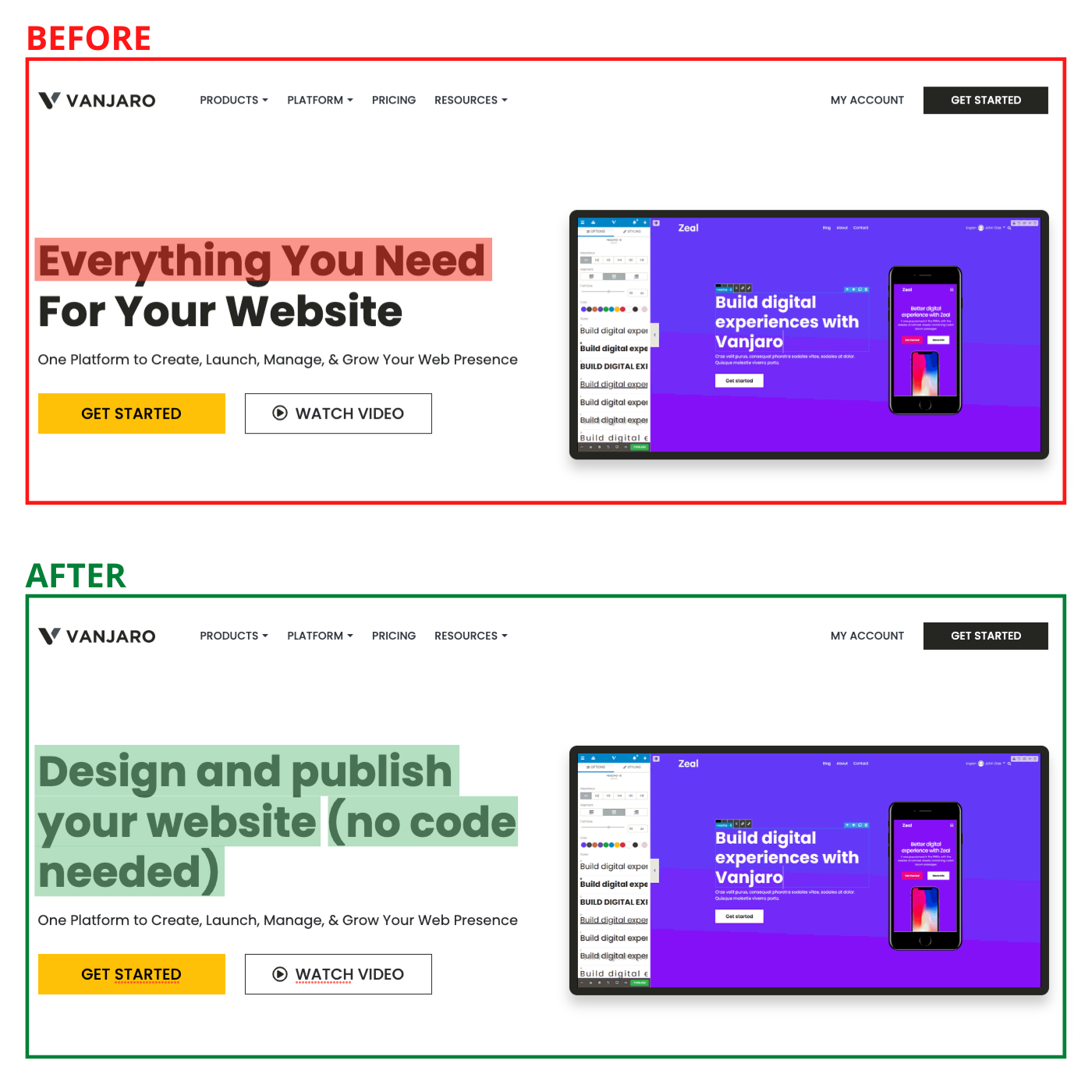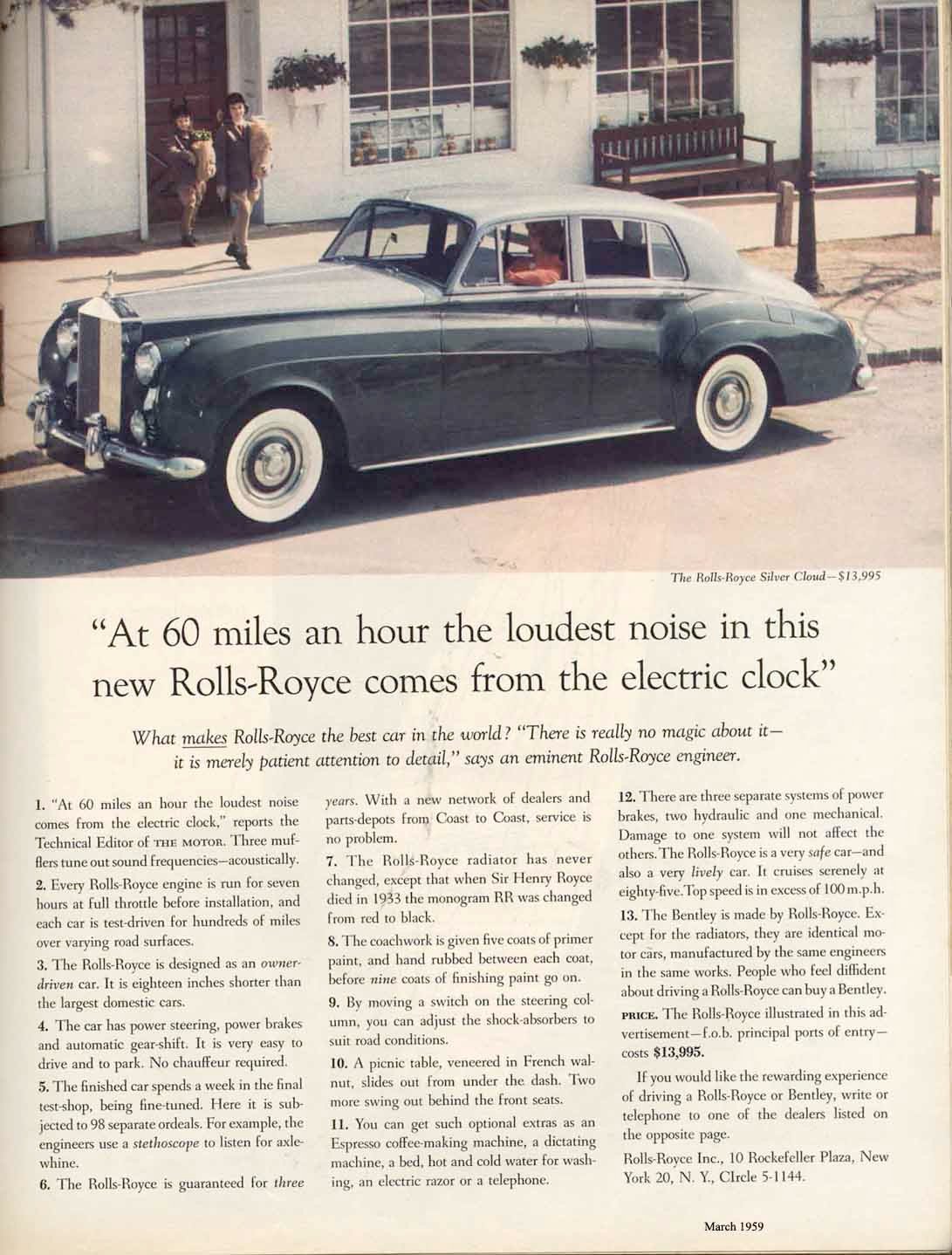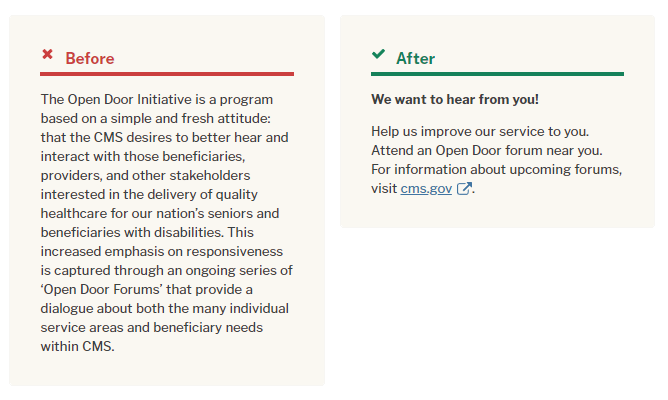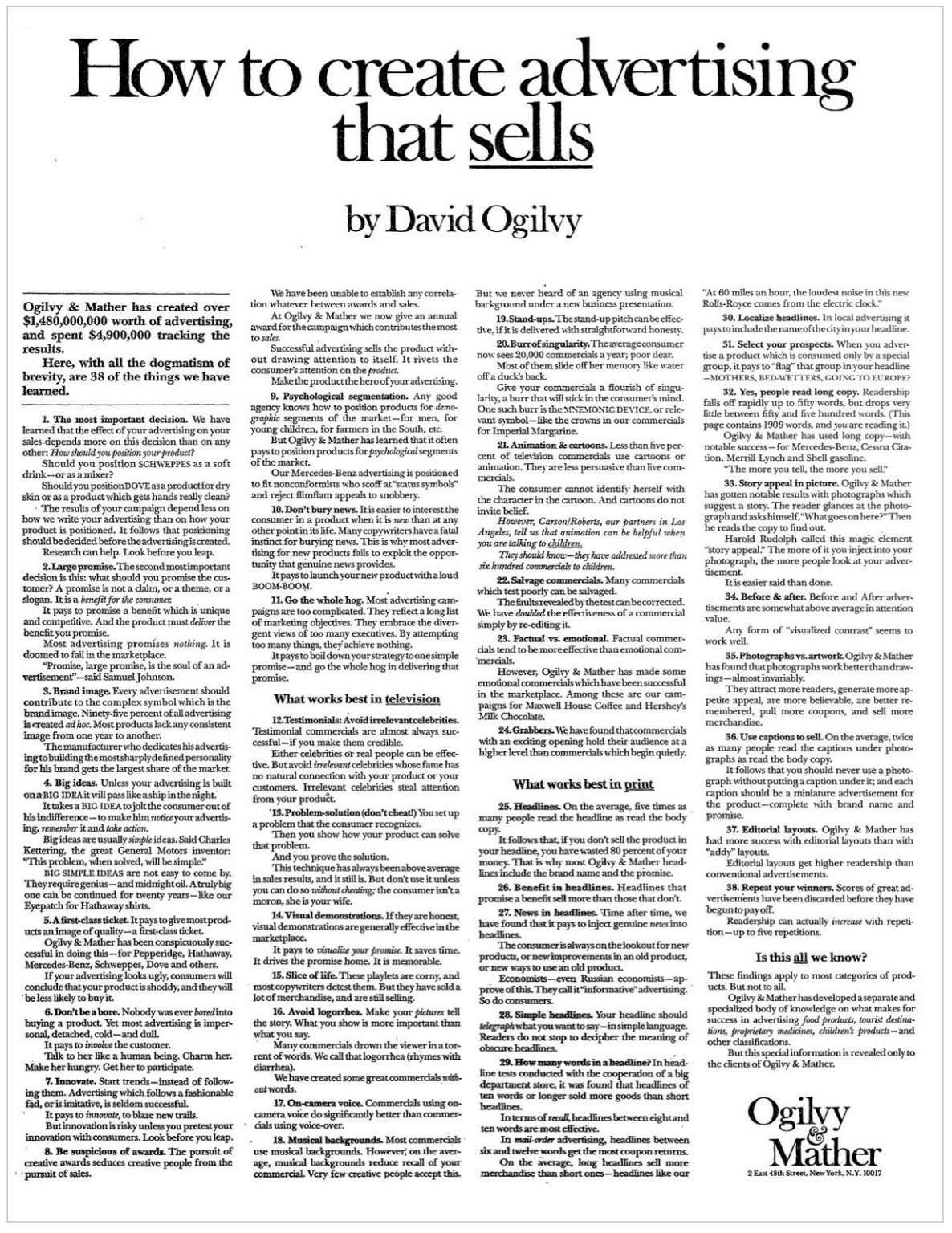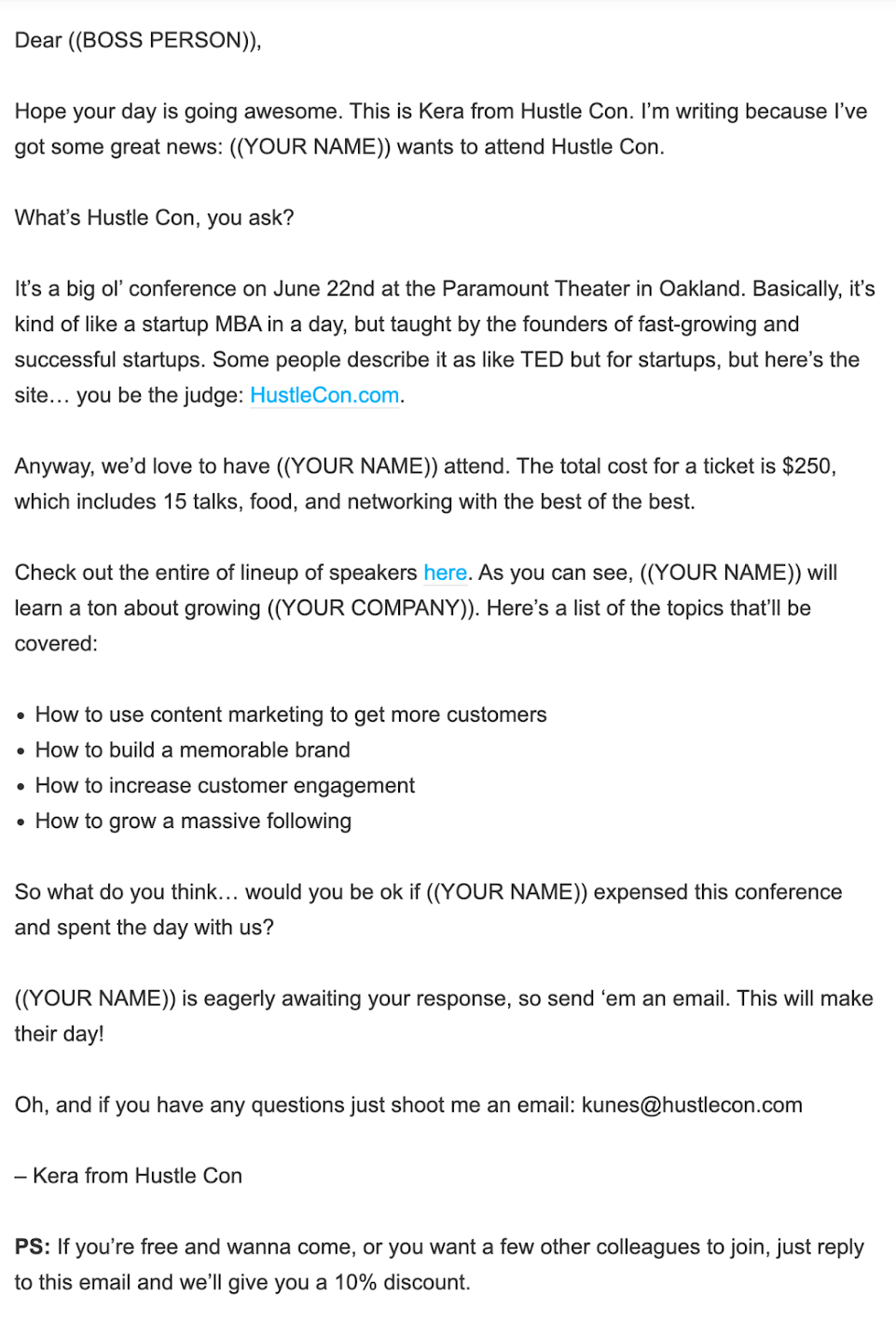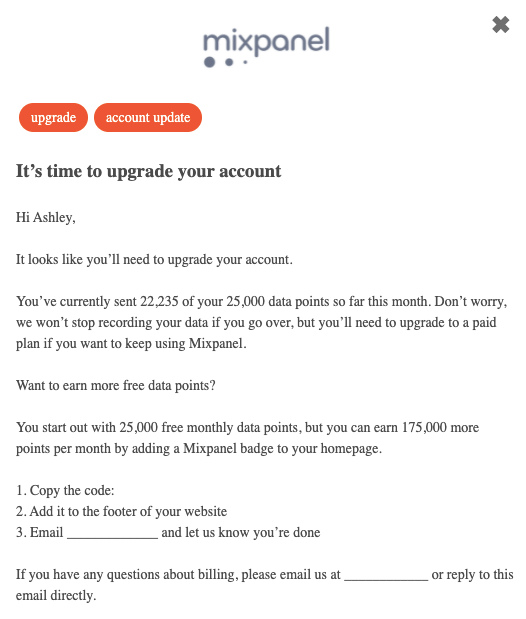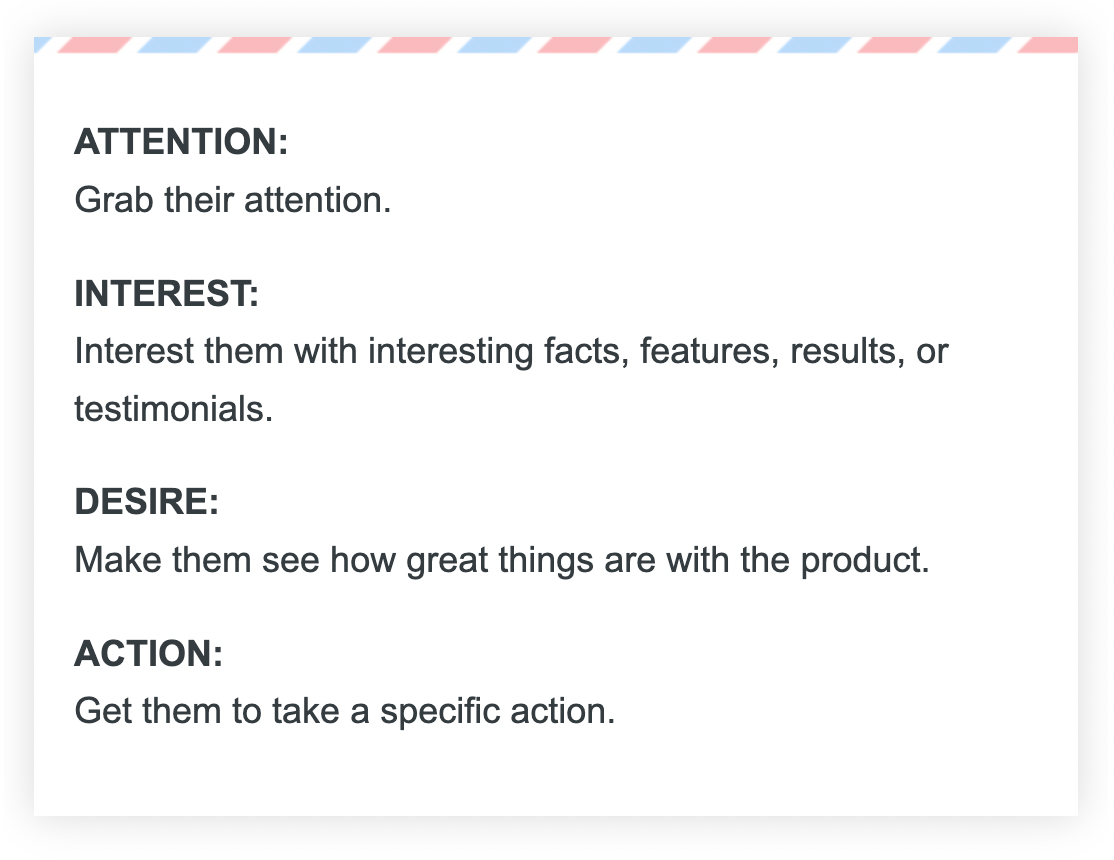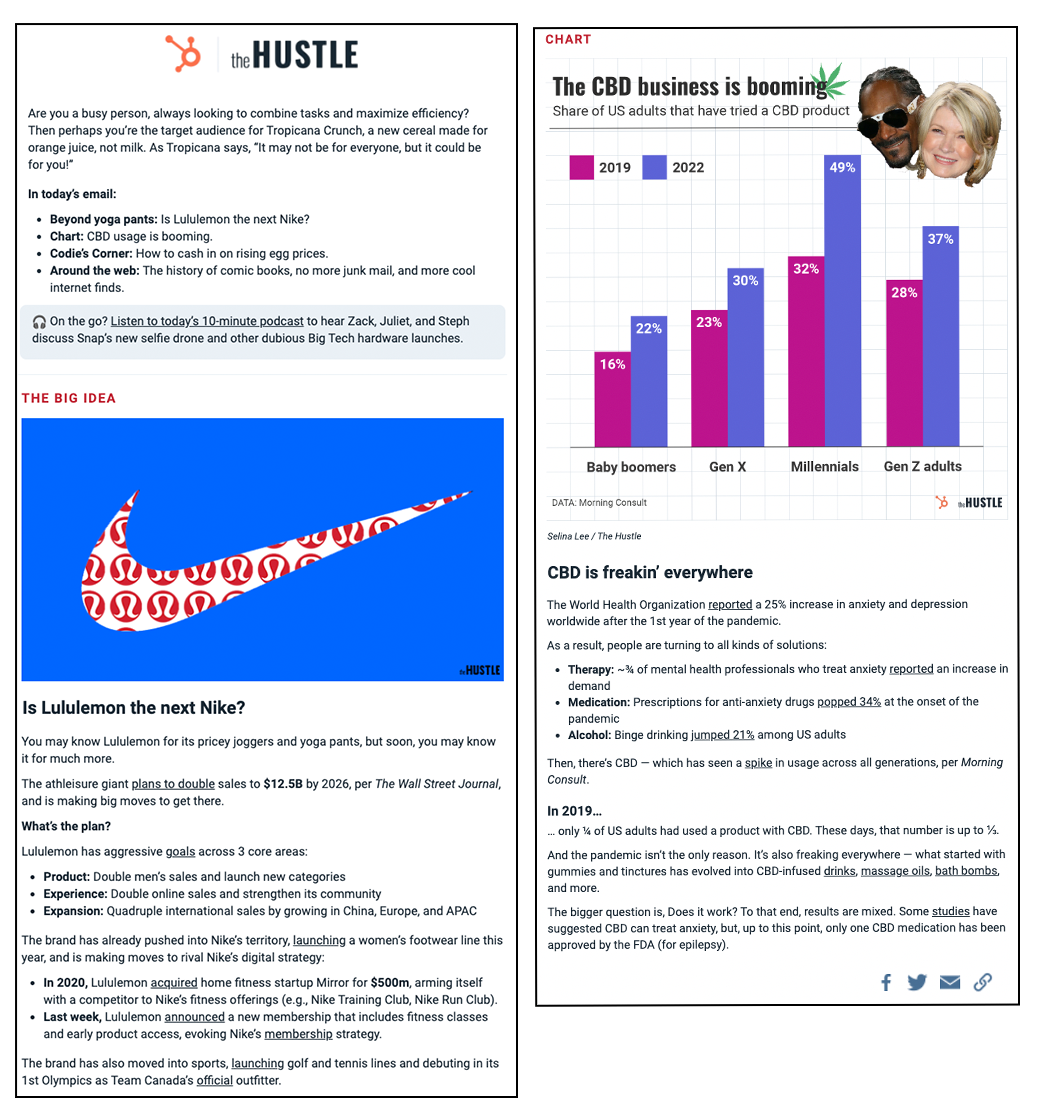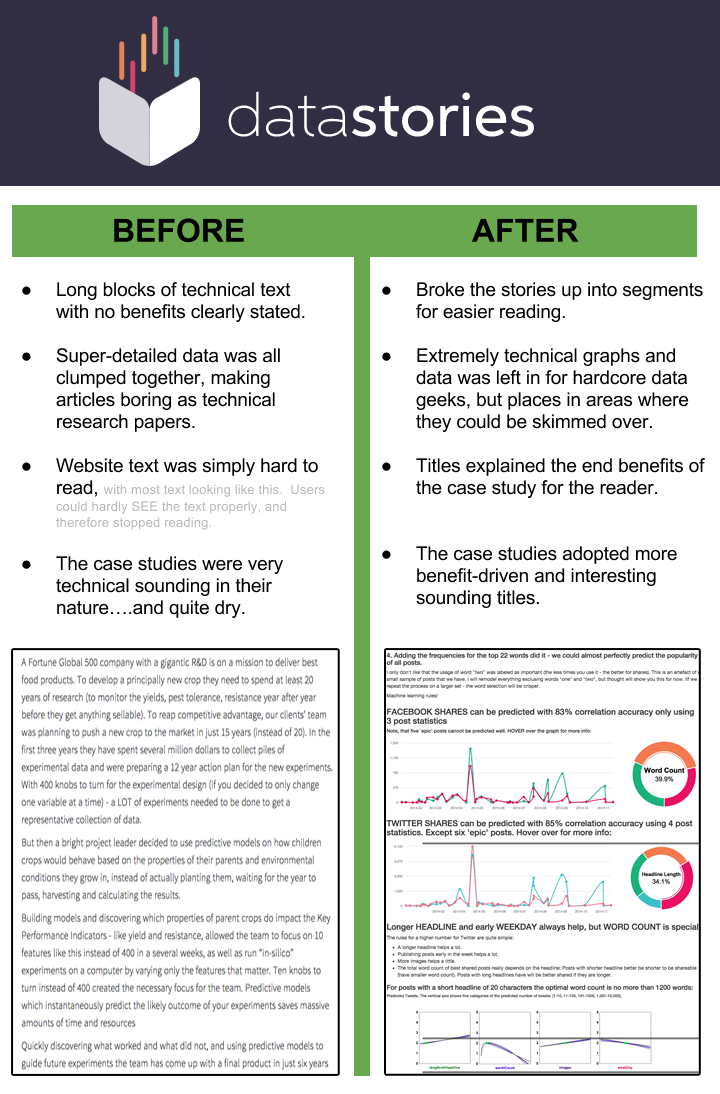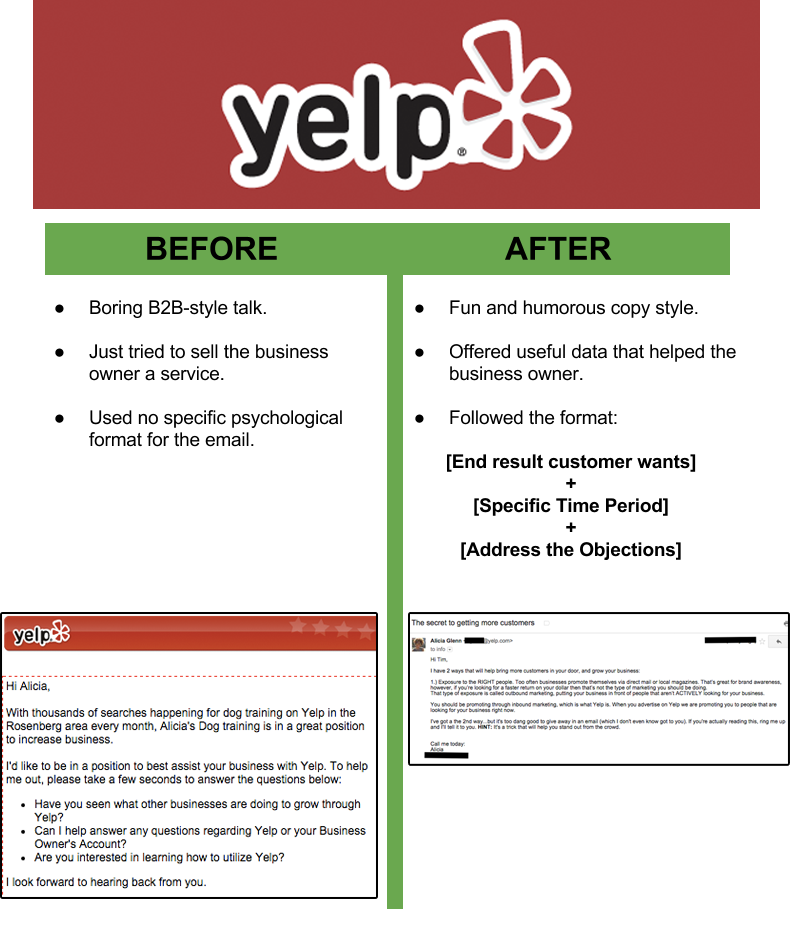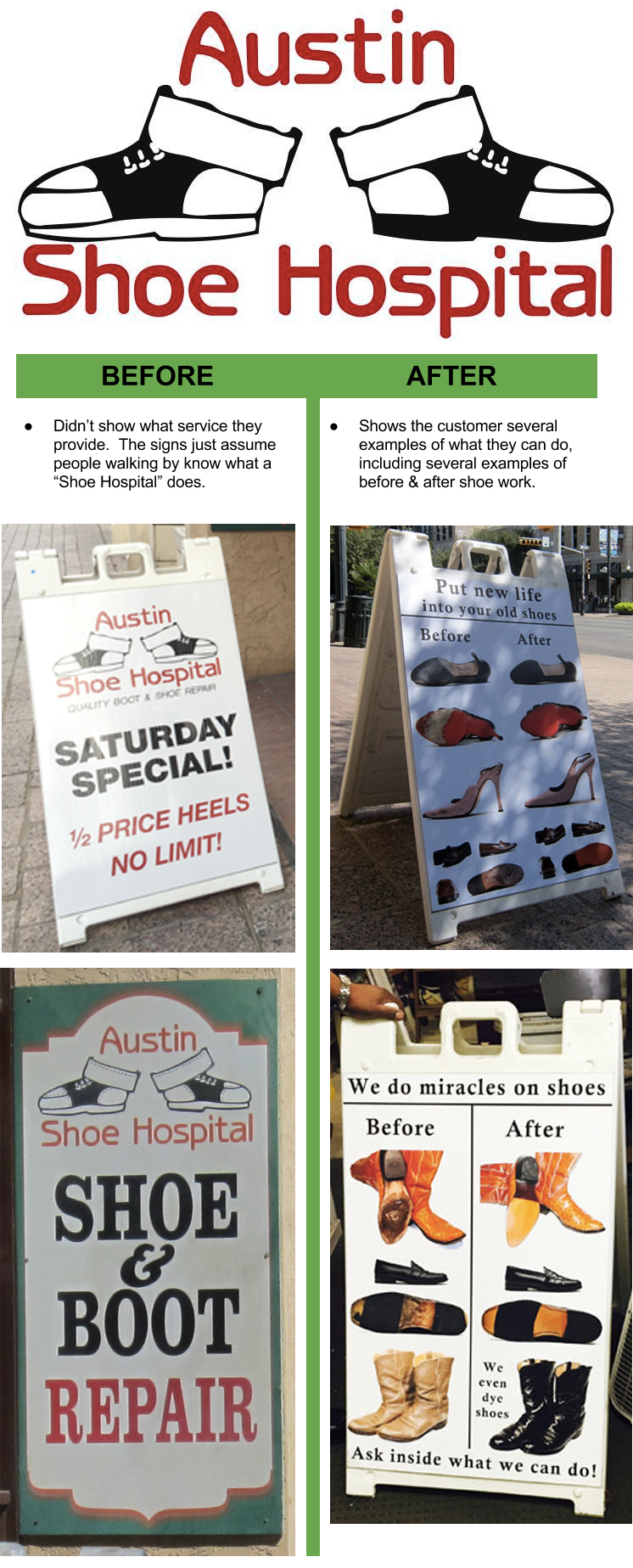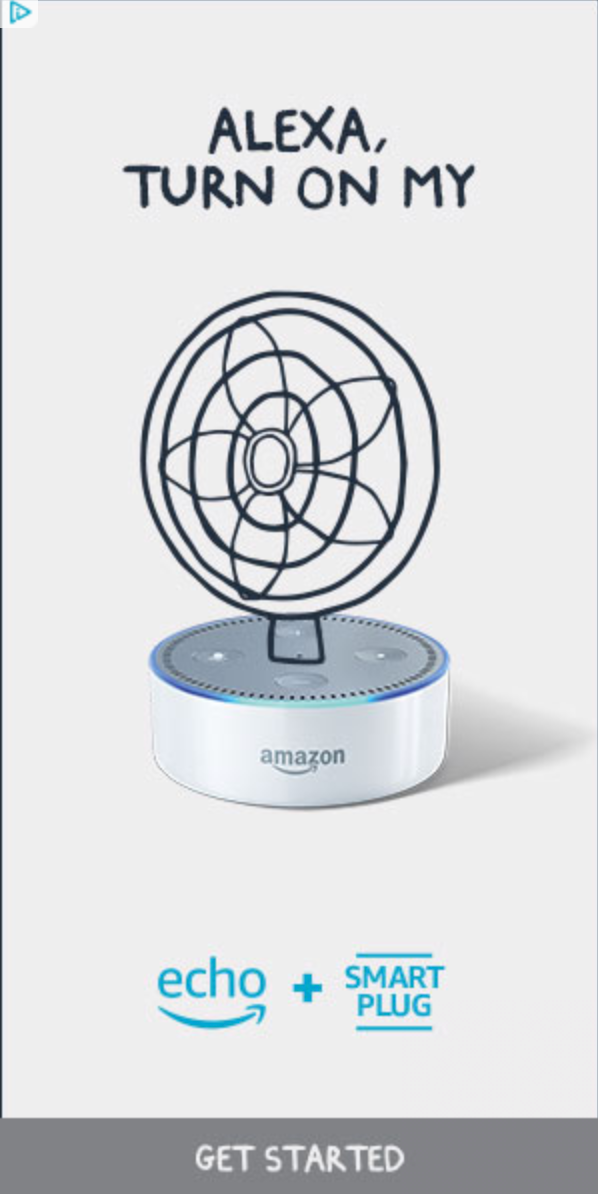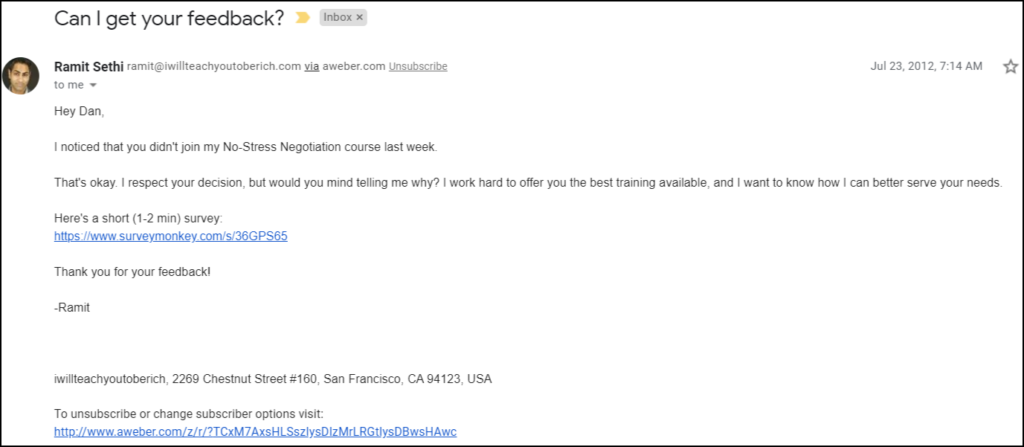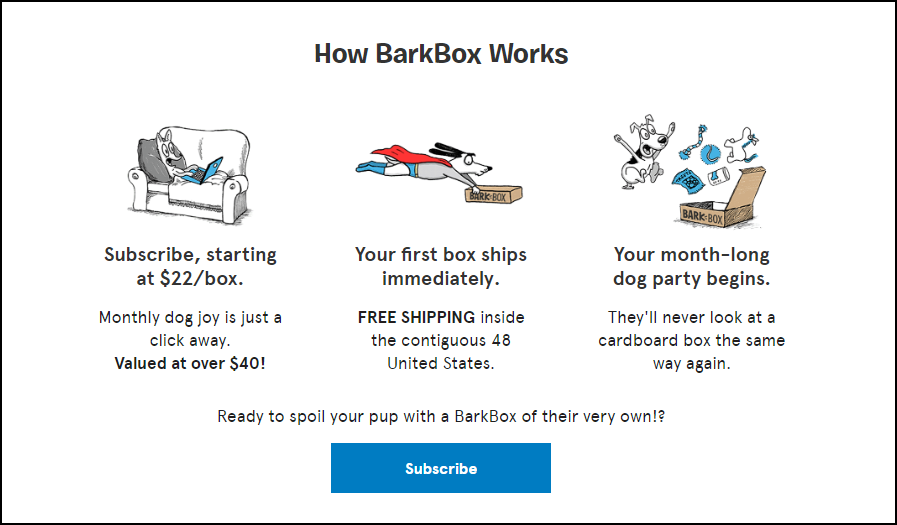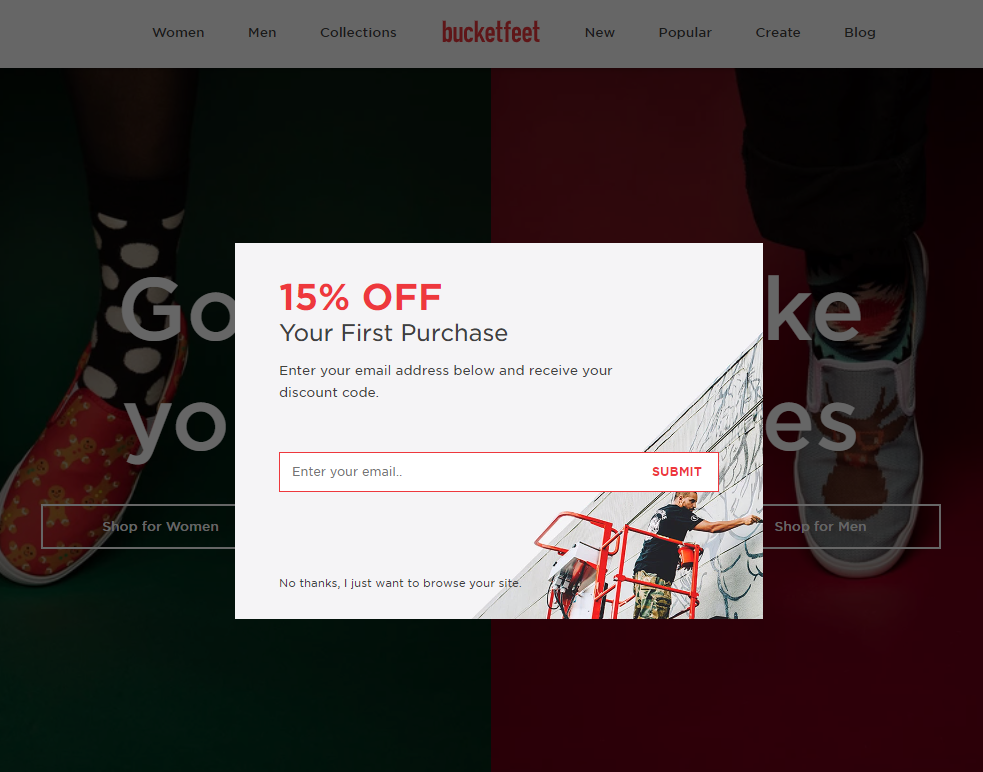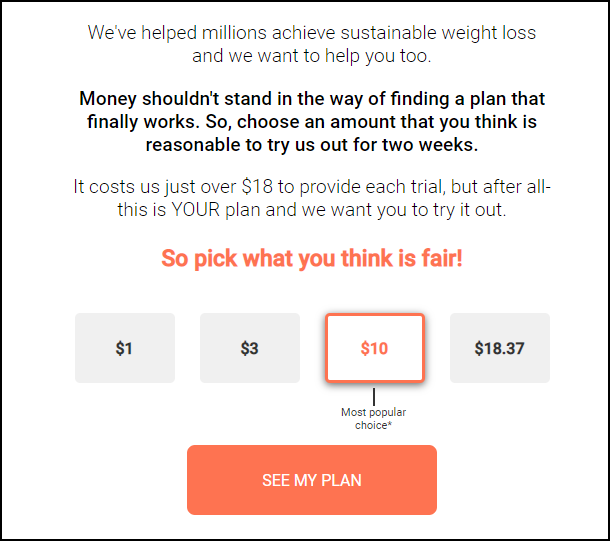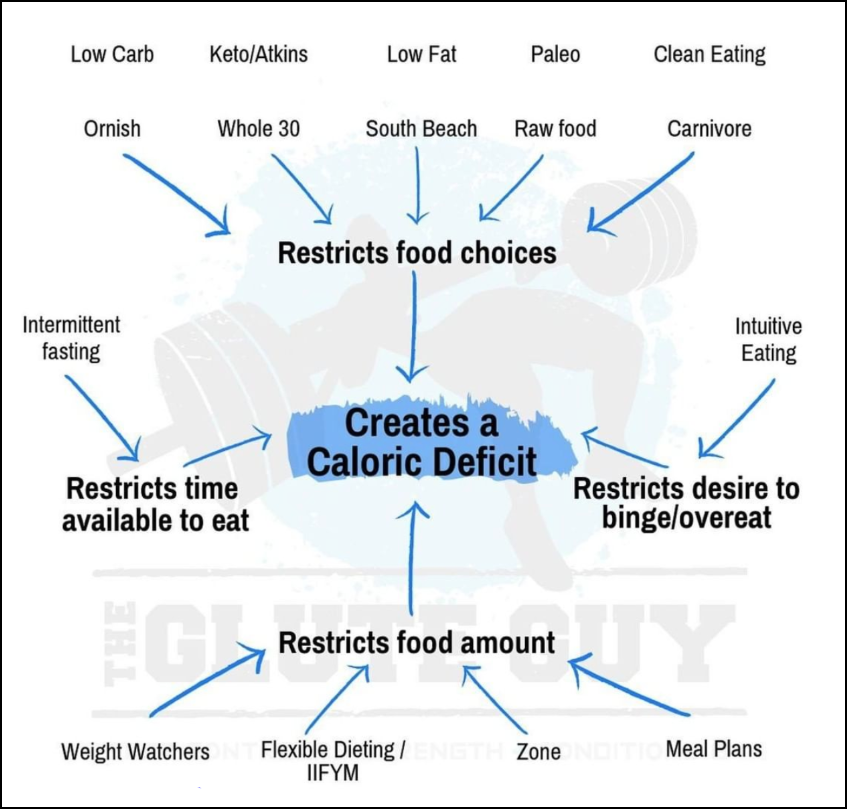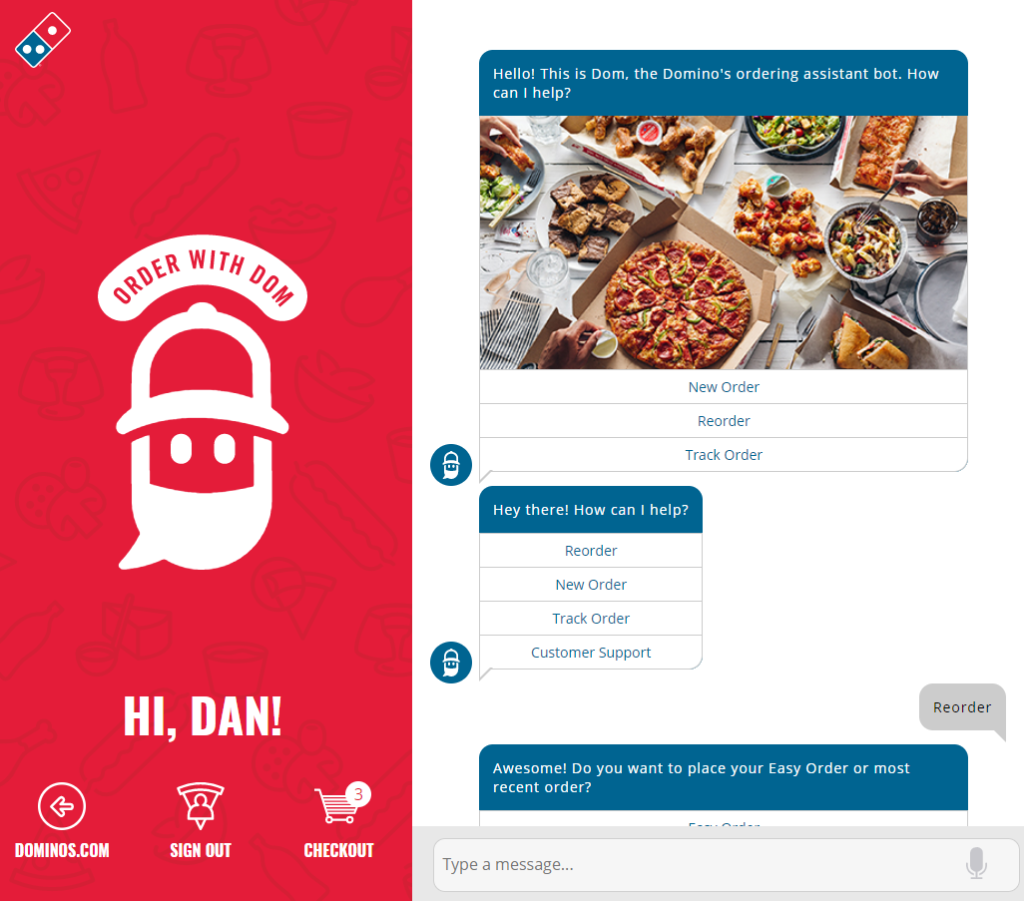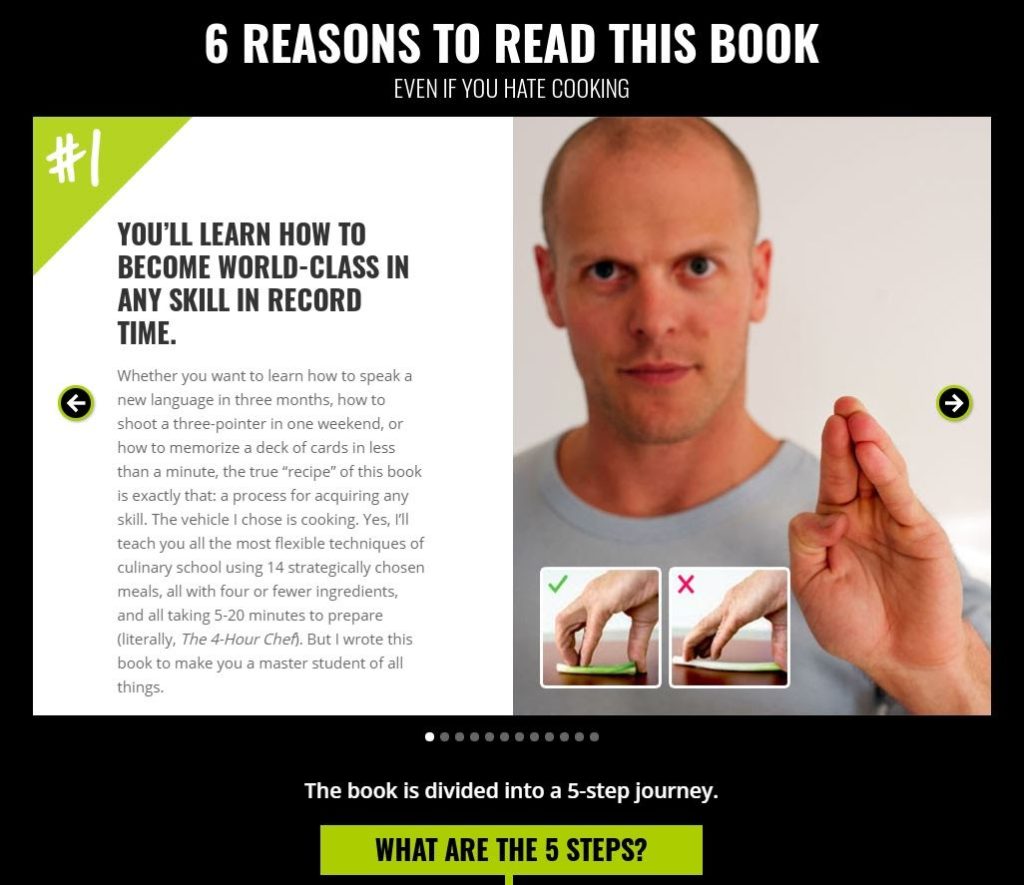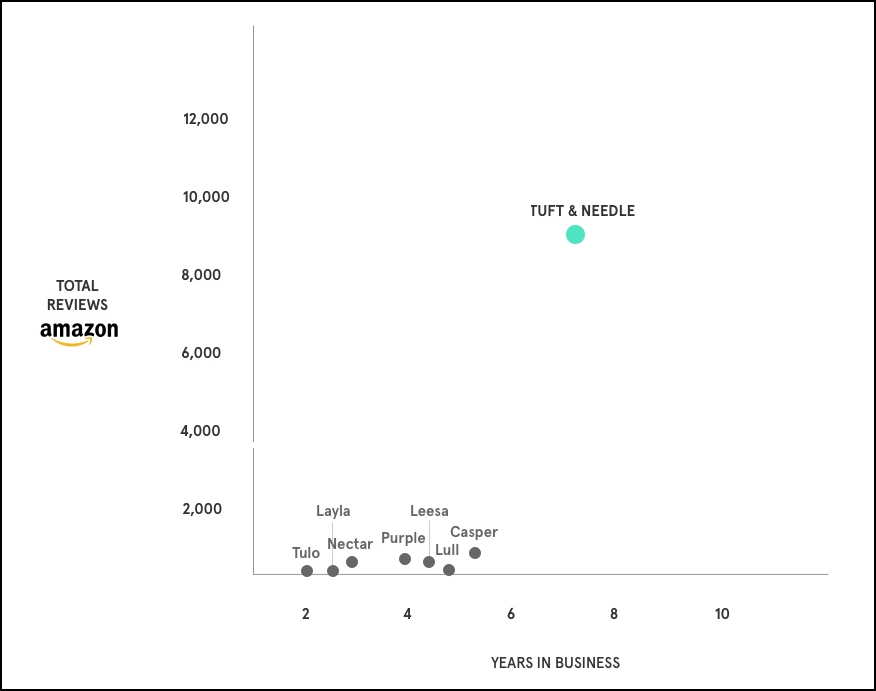Tone of Voice in Copywriting & Your Brand (w/ Examples)

In copywriting it’s super helpful to first find the tone of your voice.
Why?
- If you do it right, people will WANT to read your stuff.
- Everyone who interacts with your writing will react to it’s style. (or worse…NOT react).
- You have to write like this all day, so it’s best to at least enjoy doing it!
The good part is, you don’t have to stick with one tone of voice forever.
There are MANY different tone’s of voice you can use in your writing.
I don’t care if you run a small blog…..
I don’t care if you own a dental practice…..
I don’t care if you are a Fortune 500 Company salesperson…..
The tone you use in your writing is interchangeable for different situations.
Take my hand ::eww don’t really touch my hand:: and let’s look at some tone of voice examples together:

Omg…..if you’re a SaaS company (Software As A Service), you often have the easiest job of all. Because all you have to do is SHOW YOUR PRODUCT WORKING!!!
Member Mouse does a fantastic job on their landing page just SHOWING with video the product works:

Why bother with tons of text when you can just SHOW something in a quick screen-capture video?
Another thing they do well is list a bunch of features:

Most of the people coming to Member Mouse ALREADY KNOW they are shopping for a membership website plugin…..so they don’t need to extensively explain each feature.
And they actually have videos in the support section showing the features in action, so there’s not much need to use tons of text here.
As you’ll notice, they had to have very little “Tone” because people aren’t coming to this site for the “TONE”…..they’re coming for a working piece of SOFTWARE.
Just show the damn thing in action!
Also what works well……GIF’s.
Here’s an example from Gif Cam that shows how easy it is to add text on their software:

Why bother WRITING about how great it is….when you can just SHOW it?
The “SaaS Company” Tone of Voice:
- Calm and cool.
- List lots of benefits.
-
Show the product in action.

The “Super Vulnerable” Tone is best deployed for a story that actually feels difficult or “vulnerable” to share.
For example, in this Prey Project copy from AppSumo I wrote years ago…..

It was the first time we’d used “vulnerable” copy on AppSumo and it worked spectacularly.
I had actually been robbed a few months before…..and the feeling was extremely violating. I would literally fantasize about what I would do to the bastards that robbed me if I found them.
…..now that’s kind of messed up thinking right?
Well I knew I couldn’t be the only one that felt like this. And to my surprise, I got a bomb-explosion of emails in my inbox that day about that email. Even from people who are already great copywriters:

Like I said in the beginning of this article, you can use all these different styles at different times.
For that particular deal, telling a hard-hitting-emotional story was the best way I could get people to use Prey.
The “Super Vulnerable” Tone of Voice:
- Emotional and heartfelt.
- The reader should feel your pain.
- It should be slightly uncomfortable to publish.

Want to find out the kinds of tone your industry likes?? JUST STEAL IT!!!
It’s super easy to figure out what kind of tone gets the broadest range of people:
- Just go to Amazon.com/books and enter your industry or keyword.
- Sort by “Most Relevant”.
- Either buy the top 10 books and read them. Or read the free previews. Or read the top comments on the books.
You’ll very quickly get a sense of how people are writing in this industry!
Now…..this “Steal It” method is dangerous, because generally people who just try to copy everyone else without any uniqueness tend to fade into the background. However, it can give you some seriously-amazing insight into the broad mindset of your audience.
Here’s some examples:
Let’s say you wanna figure out what your Tone of Voice should be for a dog training website.
Well, just follow 3 steps above….
Here’s the results for the Top 10 “Dog Training” books on Amazon:

Notice just from their covers and titles everything is “Happy” and “Natural” and “Friendly” and “Best Friendy.”
So naturally we can see people like this “Friendly and Happy” tone of voice.
So if I came in with a crazy book title and tone…..while it could POSSIBLY draw a lot of attention, it doesn’t seem like the type of book that most people are actually paying money for.
So I wouldn’t hit the dog training market with a CRAZY AND WILD title like this:

That title isn’t very consistent with what the paying public is buying.
Now let’s do another “Steal It” experiment….this time on: Stock Analysis
What should the tone be if we want to write about Stock Analysis?
Well here’s the top 10 books on Amazon:

Notice the covers and titles are pretty serious.
There’s a lot of language like “security analysis” and “guide to financial markets” and “technical analysis” talk. You don’t see a bunch of wacky or super-casual style copy in these best sellers eh?
So if we wanted to write a Stock Analysis site, it seems the best respected books are more serious. This means I WOULD NOT write super goofy and wacky like this:

As hilarious as this might be (and who knows, it might even work!)……we can ascertain from looking at all the top sellers that the tone of voice for this Stock Analysis niche is going to be more “professional.”
This is likely a function of:
- The people in the industry are relatively professional.
- The people who write these kind of books are quite professional.
- The people buying these books want to learn from a “professional” source.
So if I were to write “Stock Analysis” articles, I would adopt the tone of the most popular material. That doesn’t mean I’d strip out all personality, it just means I probably would want to avoid looking crazy and goofy.

The B2B Copywriting Tone of Voice is the most confusing for people. Most people in the B2B (Business To Business) sales industry think they have to be SUPER FORMAL which in their mind means “boring”….but it’s not totally true.
- You don’t have to act formal, you jut have to be “Professional-Yet-Human-Sounding.”
- Just write like you talk in the office or in a sales meeting.
- Don’t sound like a robot because you think it’s “more professional.” This hurts the chances of your email being read.
- Do NOT “just pitch them.” You need to offer some value to the other person.
When I tell people these rules for B2B emails, they always end up saying this:

No. They. Do Not.
No one wants to read boring-ass emails!! Especially when they get 100+ of them everyday!
They want emails that either:
- Show them something awesome.
- –or–
- Show them something that can make their lives better/easier.
Let’s look at an example. Checkout these B2B email copywriting templates from Yelp:
Here’s a sample of a “Boring Formal B2B” email they would send to businesses:
Yelp Template B2B Email Results (Boring Formal Sounding):

Here are the results from this “Boring Formal” email:
50 Sent
33 Opened
1 Response
3.33% response rate 😞
This email is too boring and formal, and business owners get requests like this emails by the hundreds.
The important thing is to either be REALLY HELPFUL, or STAND OUT to get people’s attention. Even a little personality can go an extremely long way.
Yelp “Personality Injected” B2B Email Results (Professional Yet Human Sounding):

Notice how this email is still professional, yet speaks like a HUMAN, not a boring robot. It also offers the person some real VALUE. Not just a sales pitch.
Here are the result of this “Professional-Yet-Human-Sounding” email:
50 Sent
35 Opened
4 Responses back
11.43 % response rate 🙂
So……what do you think now?
Imagine sending 1,000 emails over the course of a month. At the response rates above, you would get:
- Boring Formal Email: 33 responses.
- Professional-Yet-Human-Sounding Email: 114 responses!
For the same amount of work Alicia is now getting more than 3x the responses by using a “Professional-Yet-Human-Sounding” tone of voice.
Maybe try to inject just a little value and a little personality into your B2B emails. It can make a huge improvement.
The “B2B Company” Tone of Voice:
- Informative and helpful.
- Write words like you talk.
- Try not to sound so formal that you turn into a Boring Robot.


The Fatass Sumo Tone is a tone of voice I developed when we were in the big growth phase of AppSumo and I was writing all the copy. Here he is:

Since there was already this great Sumo logo, I decided to give him a personality. And since he is fictitious, I felt like I could get away with waaaayyyy more that I usually could.
So the Fatass Sumo character is like this:
- He’s brash.
- He’s super fat (512 lbs ….because “512” is the Austin area code)
- He’s kinda sexist sometimes.
- He’s kinda racist sometimes.
- He eats a lot.
- He “kidnaps” people to convince them to give a better deal to the “Sumo-lings”.
- Here’s some (super old) examples of “The Fatass Sumo Tone”: Kernest, Hiring, Sumo Business Blueprint, Blueprint 2
This made for some HILARIOUS pieces of copy that would get away with crazy amounts of Asian jokes, fat jokes, “you throw like a woman” jokes.
I could also make totally outrageous selling points that other wise wouldn’t fly like:
“I currently have Drew Houston of Dropbox tied up in the trunk of my car…..and won’t let him out till he gives the Sumo-lings 85% off a year subscription to DropBox.”
“This Fatass Sumo needs to get my daily 40 burritos for lunch, so I need money fast. That’s why I’m willing to let this deal go for only $29/piece.”
Were these kind lines stupid? Probably.
But did a certain percentage of people pay attention and buy? YES!
The “Fatass Sumo” Tone of Voice:
- Adopt the persona of the character.
- You get extra leeway to be “crazier” with this tone.
-
First keep the emails informational, then you can insert some humor.

Are you super funny? Then write funny! Other funny people will like it!
Are you boring as hell?? Then write boring! Other boring people will like it!
Hi. I’m Neville. I’m sort of cheesy. I’m kinda informal. And that’s totally ok.
- Look at my drawings on my What Is Copywriting page, they’re cheesy.
- Look at my style of writing throughout this blog, or my videos, or my personal blog.
- Scroll to the bottom of this blog post, even my “All Rights Reserved” is kinda cheesy.
I’m cheesy and so that’s how I should try to write my personal content.
It’s the unique thing my writing brings to this industry.
The biggest mistake in copywriting is trying to write for the middle of the road.
Think about how these people got famous:
- Howard Stern.
- Rush Limbaugh.
- Kanye West.
- Donald Trump.
- Marilyn Manson.
- Dr. Dre.
- Paris Hilton.
They are all polarizing. Kind of like Kim Kardashian:

There will be a certain group of people who hate her.
There will be a certain group of people who love her.
People like this make you agree, or vehemently disagree. The thing about them is:
They keep the crowd awake.
So don’t try to be so middle-of-the-road just because one weirdo says he doesn’t like your writing style.
The “Write Like You Act” Tone of Voice:
- Writing like YOU is the easiest person to write as.
- Sometime’s you’re sad. So write in a sad tone.
- Sometime’s you’re happy. So write in a happy tone.
- Sometime’s you’re angry about a subject. So write in an angry tone.
-
Being YOU is easy.

You see, I think I’m hilarious. I know it’s not true as I’d like it to be…..but it’s what I go for. In the end, writing like MYSELF is the easiest thing in the world to do.
But since I can remember, I’ve enjoyed reading stuff that’s informative yet has a “unique flair” to it. Gary Halbert or Felix Dennis are both examples who have hilariously funny copy, yet backed with super-informative material.
It’s almost like this combination of “informative and funny” is the best of both worlds:
- Laughter
- &
- Learning
So this is the type of copy I prefer to write. Other people who like Informative-Yet-Kinda-Funny articles will like me. People who are staunchy and not funny…..won’t.
“Ok Neville, I have a super boring life AND boring writing….am I doomed to failure??”
You’re at a disadvantage for sure. If you’re not very interesting or have new ideas, it’s hard to get a large audience to follow you.
BUT…..you can (possibly) make up for it in other ways like this:
Having really insider information:
- No one thinks Ben Bernanke is a wild-n-crazy guy…..but when he sets the interest rates that govern all the worlds banks……that makes him REALLY interesting and important to listen to.
Being damn good with math and numbers and analyzing the results:
- I follow this guy Max Roser on Twitter. It’s not because he’s “such a hoot” to follow……but he creates graphs from data he scrapes, and the results are SUPER interesting, often times I’ve never seen that information presented anywhere but his graphs.
Doing unbelievable work:
- You may be dry writer on your graphics design website, but if you’re work is just STUNNING then people will pay attention to that.
Don’t shy away from your boringness:
- If you have a boring tone…..then other boring people may enjoy your boring tone! It’s best to write like yourself, and not try to be someone else. It nearly always comes through as phony.

My favorite test when reading copy is “The Caveman Test.”
It’s basically where you use a Caveman voice to determine if something sucks or not.
You act and talk like a dumb caveman, and instantly things become clearer. Like with this boring copy on the left, and the caveman’s instant reaction:

If The Caveman reads a sentence and don’t INSTANTLY know what it means……You have failed.
This is a deviously simple-yet-effective way to tell if your copy is boring people, or keeping them glued to the page.
The Caveman Test:
- Pretend you’re a dumb and short-attention-span caveman.
- Start reading the copy and if it loses your attention, the copy sucks.
- Re-write or totally remove sentences/paragraphs that lose your attention.
Some quick tips to find your own Copywriting Tone of Voice:
- Stay caffeinated. That always puts your brain in a playful mood.
- Make sure you’re not tired or grumpy when writing (unless that’s the tone you’re going for).
- Have a SINGLE purpose of the copy. (example: Get them to click the buy button).
- Use some of the “angles” from the Problem Solving Checklist to re-look at your copy.
- Signup to my newsletter to get more tips directly to your inbox.
Hope your learned something about the Tone of Voice to use in your copywriting today.
Please share with friends if you enjoyed. Thank you!







